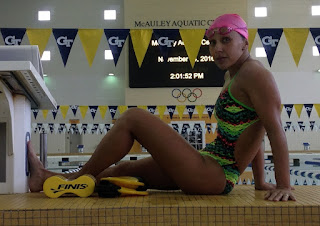Coach Dave Williams fires on: Why triathletes should kick more in the pool
For many triathletes who did not grow up swimming, swimming is often their weakest discipline. For that reason, most tend to spend too much time and money on private swim lessons, YouTube instruction videos, internet searches and the rest, hoping to magically improve their swimming for the next season often with very little time in the water actually swimming. However, there is one simple truth that a lot of us either fail to understand or it takes us some time to realize.
If you did not grow up swimming, swimming improvement is a gradual process that takes time. Proper coaching with emphasis on the fundamentals will pay dividends that will speed up the process in both the short and the long term.
Learning proper technique is fundamental but understanding the theory of proper technique and actually applying it consistently in your swims is the key to success.
This is why a great coach can teach you and allow you to focus on one thing at a time and for a long period of time. Blending some technique work with volume and frequency will get you good results in time.
The first thing we started working with coach Dave Williams - and still do - is head and body position followed by KICKING.
WHY?
"Proper positioning in the water is necessary to reduce drag and increase speed and efficiency so that you are not killing yourself to keep up with the faster swimmers.
Proper kicking technique is necessary to drive the body forward. Practically speaking however, the kick only provides about 10-15% propulsion. It is for this reason that most triathletes overlook it especially when considering that both the bike and the run are still to come. But a poor kick can increase drag, throw your body out of alignment, and work against your forward momentum. Stand alone kick sets are also beneficial in increasing blood flow and removing lactic acid from the muscles thereby reducing recovery time between sessions.
Finally, it is imperative to spend lots of time in the water developing the muscle memory and training the energy systems required for faster swim times and smoother transitions. This is especially important for older athletes as there is little to no impact trauma associated with swim training. A 60 minute session 4 to 5 days per week or a 90 minute session 3 to 4 days per week will pay dividends that will also benefit the bike and the run." ~ coach Dave Williams.





Runners that become triathletes often times have what is called "runners kick." Over the years they have run so much that they have lost flexibility in their ankles. As a result of their ankles not being able to bend much they have terrible kicks when swimming. The only way to get flexibility back into the ankles is to do dedicated kick workouts in the pool. Unfortunately, time-crunched age group triathletes are blind to the benefits of focusing on their kick before trying to master overall proper freestyle swim stroke mechanics.
ReplyDeleteI've always advised friends new to triathlon to get good at kicking laps in the pool before trying to master the arms and rotation. And I advise them to get good not only at freestyle kicks, but also at butterfly kicking, too. Don't just kick without fins. Use fins a lot when kicking. They will add resistance to your workout and you'll get stronger at kicking quicker by using them. But don't use fins exclusively because you want to have quickness in your kick, too. NEVER use flippers - they are cheating devices. My fins of choice are the Zoomers Gold model.
Never think of you kicks as an add to propulsion. Your kicks primarily help you keep you core in line and your tail streamlined. The really good swimmers in triathlon use their legs just enough to keep the core in line and the tail streamlined so their legs are rested for the bike and the run to come. But just because the legs don't do much work during the swim in competition does NOT mean that they do not need to be fit and strong during the swim. Unfit swim legs (or legs kicking with stiff ankles) are not going to be much help in keeping the core in line and the tail streamlined.
I will just say that learning how to kick does not take time off from working at other technique elements - you just have to have quite a bit of kicking incorporated regularly into your workouts. Kicking is fundamental to learning how to rotate - especially side kicking!
Delete